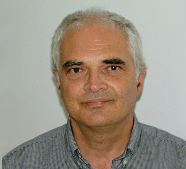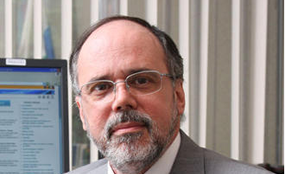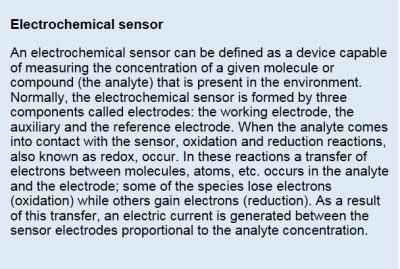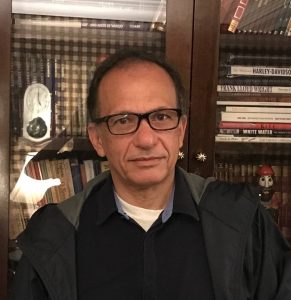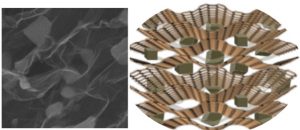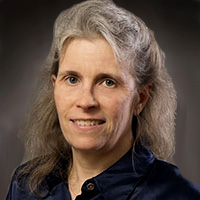
Piezoelectric materials convert mechanical energy into electric energy and vice versa. They are widely used now for ultrasonic imaging, ink jet printers, sonar systems, sensors, and in precise positioning. Thin film piezoelectric microelectomechanical systems (MEMS) already enable cell phone communications, and offer the possibility of many additional technological changes with the potential for strong social impact. The field of MEMS has already started to generate microscopic machines that are able to capture data from the environment, to process them and to carry out operations involving movement.
This subject will be addressed in a plenary lecture of the XVI B-MRS Meeting by Professor Susan Trolier-McKinstry, who leads a research group at The Pennsylvania State University, USA (Penn State) with expertise in the study and development of piezoelectric thin films and their use in MEMS. In the lecture, the scientist will reveal how she improves the performance of her piezoelectric thin films to use them as sensors, actuators and energy harvesters (that capture small amounts of mechanical energy from the environment to transform them into electrical energy for use them in low-power devices).
At Penn State, Susan Trolier-McKinstry is the Steward S. Flaschen Professor of Ceramic Science and Engineering, Professor of Electrical Engineering, and Director of the Nanofabrication facility. She is also the current president of the Materials Research Society (MRS), which has an international and interdisciplinary membership of about 14,000 people. Previously, Trolier-McKinstry was president of IEEE Ultrasonics, Ferroelectrics and Frequency Control Society and Keramos National Professional Ceramic Engineering Fraternity.
Susan Trolier-McKinstry was born in Syracuse, New York, USA. After completing her primary and secondary studies in public schools in the bordering states of New York and Pennsylvania, she entered Penn State to study Ceramic Science and Engineering. In 4 years of studies, which included her first research work on piezoelectric ceramics, she obtained her B.S. and M.S. degrees. Shortly thereafter, in 1987, she began her doctoral studies in Ceramic Science, also at Penn State, which included a research internship at Hitachi’s Central Research Laboratory in Tokyo, Japan. In both master’s and doctoral works, Troiler-McKinstry was supervised by Professor Robert E. Newnham, an expert in minerals and crystallography who created, in the late 1970s a piezoelectric composite transducer that is now widely used for ultrasound imaging. Susan Troiler-McKinstry received her PhD in 1992 and, at the same year, she began her academic career at Penn State.
Professor Troiler-McKinstry is an associate editor of the journal Applied Physics Letters. She is a fellow of the American Ceramic Society, IEEE and Materials Research Society and a scholar of the World Academy of Ceramics. She has received numerous awards and honors for her research and teaching work, such as the IEEE Ferroelectrics Achievement Award, the Ceramic Education Council’s Outstanding Educator Award, and the Robert L. Coble Award for Young Scholars from the American Ceramic Society, among others. In addition, her biography was included in the book “Successful Women Ceramic and Glass Scientists and Engineers: 100 Inspirational Profiles”, released in 2016.
Besides having developed a distinguished trajectory in research, with more than 12,000 citations to her papers and an h-index=56 according to Google Scholar, Professor Troiler-McKinstry loves teaching and is very proud of the students she has supervised.
Here follows a brief interview with this scientist.
B-MRS Newsletter: – In your opinion, what are your main scientific contributions to the field of piezoelectric thin films? Describe briefly and feel free to share references.
Susan Trolier-McKinstry: – My research group works in three main areas: 1) understanding the factors that control the magnitude of the dielectric and piezoelectric responses of materials, 2) Processing science of electroceramic films, 3) demonstration of low voltage microelectromechanical systems for actuator arrays, sensors, and energy harvesting. In the fundamental area, we have studied the role that domain structure and domain walls play in controlling the properties of high strain piezoelectric films based on ferroelectric compositions. We demonstrated the length scale over which domain walls move collectively, and have quantified the role that grain boundaries and defect chemistry have in influencing wall mobility of lead zirconate titanate. We also contributed to the development of materials that have piezoelectric coefficients that are several times larger than conventional thin films, as well as films that have energy harvesting figures of merit that exceed those of conventional films by ten times. In many cases, it has been necessary to invent and calibrate new tools for assessing the piezoelectric properties (including wafer flexure tools, and mapping interferometers for quantitative piezoelectric measurements on clamped and released parts). Once interesting materials are developed, we then work on understanding how to scale the deposition to large substrate sizes, alternate substrates such as polymers, glasses, and metals. It is also critical to be able to laterally pattern the piezoelectric films without degrading their properties. Thus, the group also studies methods to pattern at length scales ranging from 100 nm to 200 mm. Because the properties of high strain piezoelectric materials are a strong function of the composition and the crystallinity, it is imperative to develop patterning processes that do not degrade either of these factors. Finally, we have made microelectromechanical systems over a wide range of application space, including adaptive optics, rf switches, acceleration sensors, energy harvesters, and CMOS – replacement switches.
B-MRS Newsletter: – Why use piezoelectric materials in MEMS technology?
Susan Trolier-McKinstry: – Many MEMS devices are intended to either generate or sense motion. Piezoelectric materials allow this to be done with very high sensitivities in sensors, and with low voltages in actuators. Thus, it is possible to replace high voltage electrostatic devices with low voltage piezoelectric counterparts. This, in turn, simplifies the electrical system, and allows significant miniaturization of devices. For example, we are now working on a medical ultrasound system for imaging which is small enough that the whole device (including all of the electronics) can be put in a pill and swallowed for investigation of the gastrointestinal tract.
B-MRS Newsletter: – Your research group has already manufactured piezoelectric MEMS devices. Have any of these systems left the lab to be commercialized? Describe in few words, please.
Susan Trolier-McKinstry: – The field of piezoelectric MEMS is exploding now. Thus, many of the materials developments that we have made over the years are being utilized in systems being commercialized now.
B-MRS Newsletter: – What are, in your opinion, the main challenges or goals that material research societies have today?
Susan Trolier-McKinstry: – Scientific societies play crucial roles in improving scientific communication and in helping their members have productive careers. The materials research societies underpin essential interdisciplinary communication through meetings and publications because our field sits at the juncture of chemistry, physics, and engineering. Thus, it is common to see colleagues from different disciplines meeting together and discussing key issues that cross fields at materials research meetings. Key to our future is fostering the diversity of people and fields covered by the society.
B-MRS Newsletter: – In your view, how could the MRS and B-MRS communities enhance their interactions in a productive way?
Susan Trolier-McKinstry: – There are many possibilities here. Good examples might be to identify a particular joint program around an education, outreach or communication goal. One possibility would be to establish a joint program to translate education materials from one language to another to increase the quality of materials education around the world. Other possibilities might be joint programming of a symposium at a meeting, or utilizing publication vehicles like MRS Advances to make work presented at B-MRS meetings more widely available. All of these will hinge on good interactions between the people and societies involved.
On XVI B-MRS Meeting website, click on the photo of Susan Trolier-McKinstry and see her mini CV and the abstract of her plenary lecture: http://sbpmat.org.br/16controter/home/

